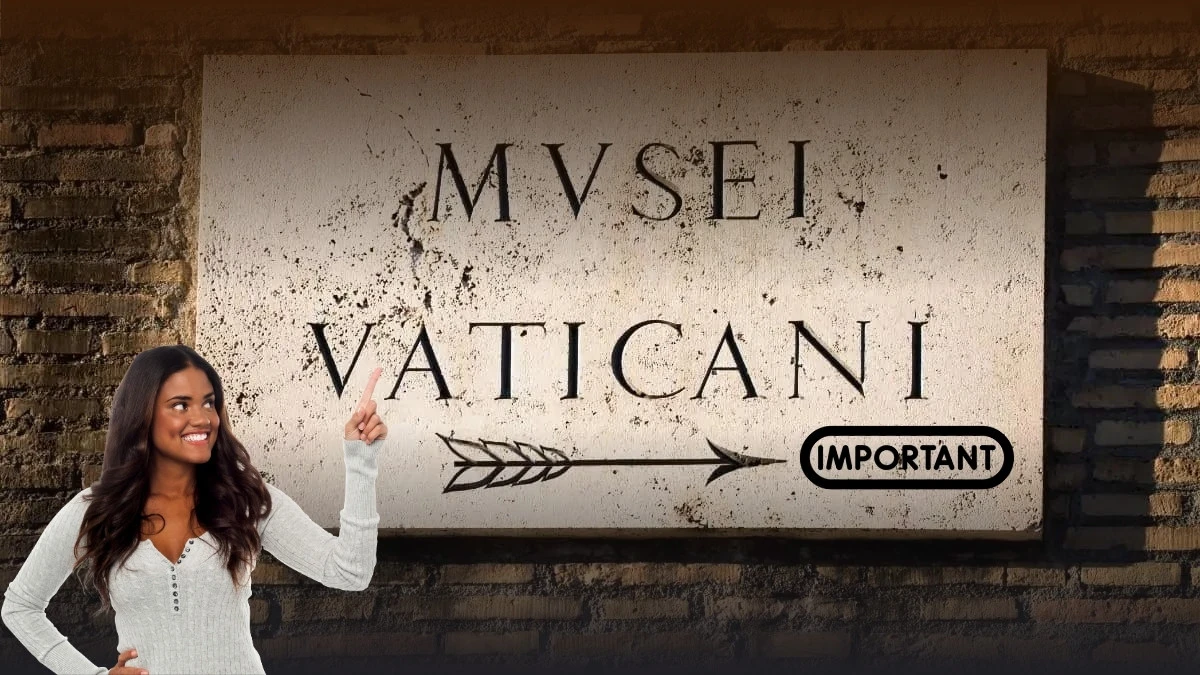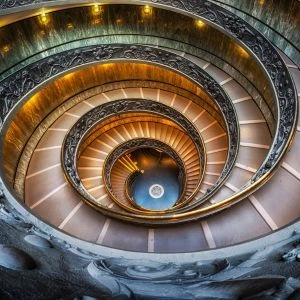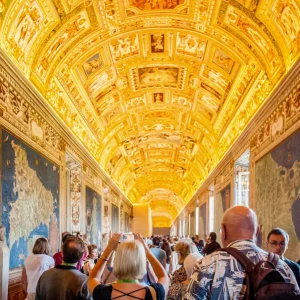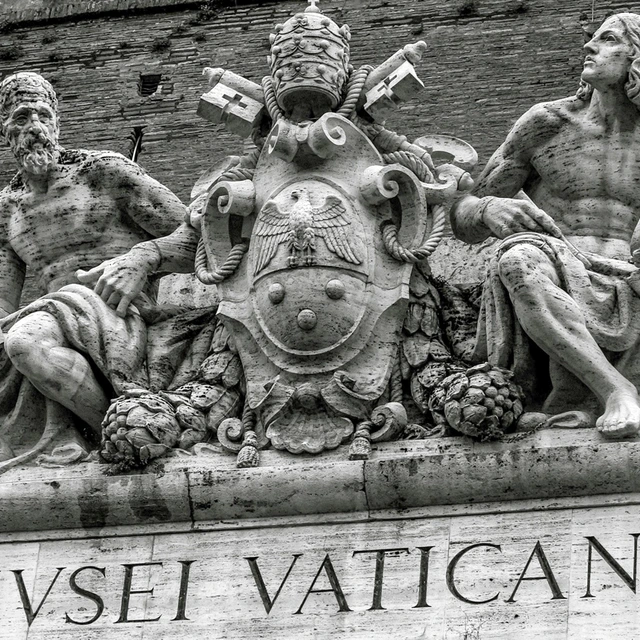Rome Attractions
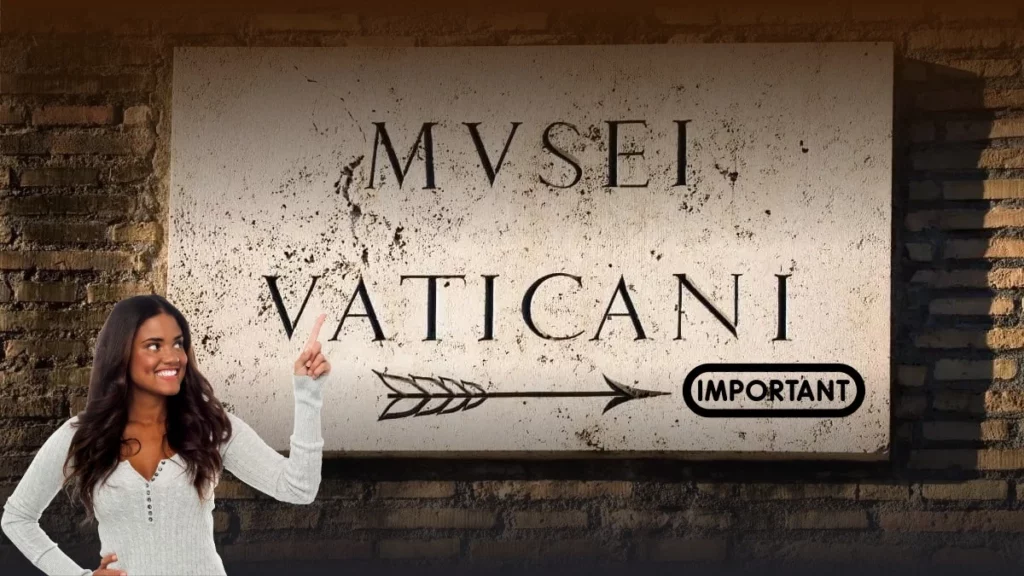
The Vatican Museums house one of the world’s largest and most impressive art collections, boasting over 70,000 paintings, sculptures, and artifacts, out of which only 20,000 are on display.
With such a vast collection, it can be overwhelming to know where to start.
To make the most of your visit, it is highly recommended that you hire a Vatican Museums guide. They will lead you through the halls to uncover the hidden gems and iconic masterpieces.
In this article, we’ll highlight 12 must-see art and sculpture exhibits you cannot miss during your trip to the Vatican Museums.
Top tickets
# Guided tour of Museums & Sistine Chapel
# Guided tour of Museums, Sistine Chapel & St Peter’s Basilica
Read up about the 12 masterpieces
The Bramante Staircase

There are two Bramante Staircases in the Vatican – the original, designed by Donato Bramante in 1505, and the modern version, designed by architect Giuseppe Momo in 1932.
The original Bramante is not open to visitors, but you must try out the modern version during your visit to the museums.
Related Reads
The double helix design allows people to go up and down without crossing each other.
Since this staircase is not in the original path of a regular visitor, you will have to indulge in a small detour.
The moment you venture into the Vatican Museums and climb the escalators, you will spot a gift shop on your right.
Once you step into the shop, you will see the staircase (you don’t need to buy anything!).
Explore the Bramante staircase for as long as you want, but DO NOT go down the stairs. These stairs lead to the exit, and once you are out, you can’t re-enter.
Raphael’s Transfiguration

This painting by Raphael, which is in the Vatican Pinacoteca (Art Gallery), depicts Jesus Christ as both human and God.
The painting has two distinct parts – the light-colored top half depicts Jesus and his serenity, while the dark bottom half represents Earth with all its problems.
The painting was commissioned by Cardinal Giulio de’ Medici, who went on to become Pope Clement VII.
Raphael died before he could finish this painting.
Recommended
Laocoon

The Laocoön is a group of statues showing two sea serpents sent by the Gods to kill the Trojan priest Laocoön and his two sons.
This sculpture is from 30 BC and was found in 1506 on the Esquiline Hill in Rome.
This exhibit is one of the most exquisite Vatican Museums statues, and hence a must-see.
Related: Skip the crowds and enjoy a personalized journey through the Vatican Museums with a private tour. With your own expert guide, you’ll dive deeper into the history, art, and secrets of the Vatican at your own pace.
Apollo Belvedere
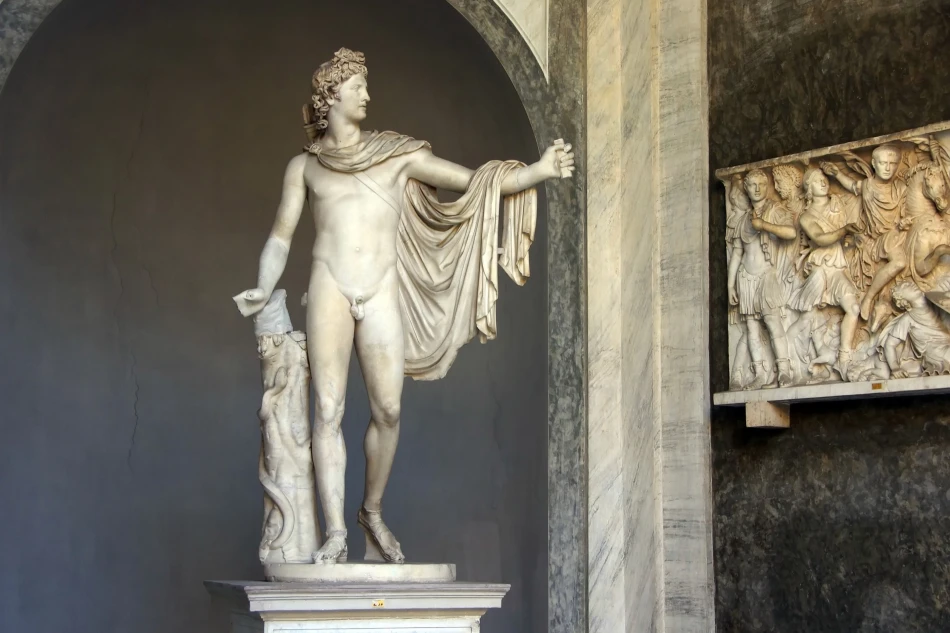
The Apollo Belvedere is a marble sculpture and is a must-see for three reasons:
– Till recently it was considered one of the most magnificent ancient sculptures ever made.
– It was one of the first pieces in the Vatican’s art collection—even before the Vatican Museums were set up
– It was Napoleon Bonaparte’s favorite sculpture, and he took it with him to The Louvre. After his defeat, the statue was returned to the Vatican.
Visual Story: 14 must-know tips before visiting Vatican Museums
The Rotunda Room
Sala Rotonda (Rotunda Room) resembles the Pantheon of Paris but is smaller in size.
During your visit to the Vatican Museums, do not miss the Oculus on the ceiling and decorative rosettes in the dome.
Stunning 2nd-century mosaics decorate the floor, and the Porphyry Basin is in the center.
Surprisingly, these intricate designs are intact and haven’t lost their color.
Porphyry Basin

The Porphyry Basin is in the center of the Rotunda Room.
It is a giant basin with a diameter of 13 meters (42.6 feet) carved out of an igneous rock (a rock created from molten lava).
The word ‘Porphyry’ comes from the Greek word for ‘Purple,’ a color associated with Roman royalty.
You can’t miss the Colosseum
Tourists who are short on time book the Colosseum and Vatican combo tour and see both attractions in a day. While others prefer to see the Colosseum and Trevi Fountain on the same day.
The School of Athens by Raphael
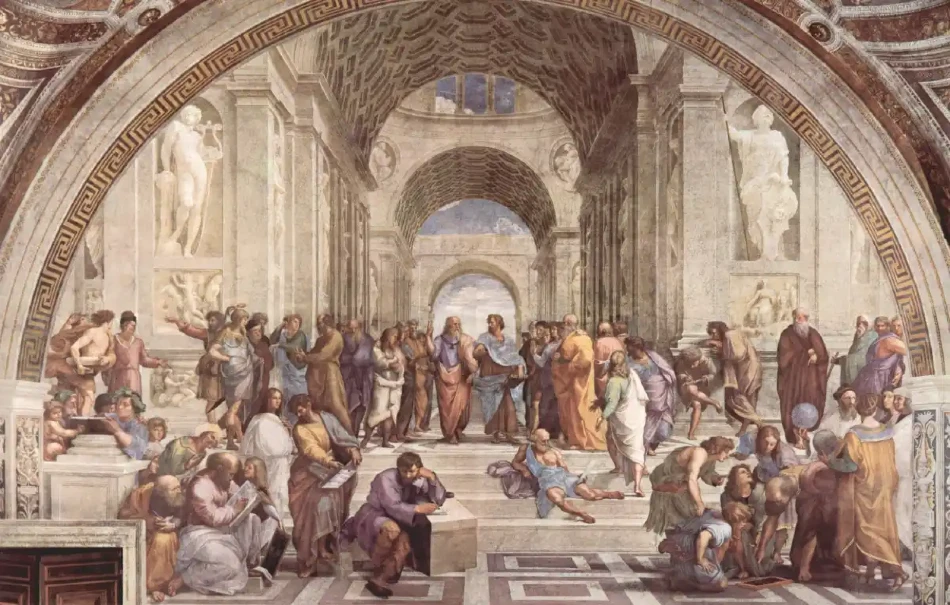
The School of Athens is in the Papal Apartments and is one of the most exquisite paintings in the Vatican Museum.
In 1508, Raphael was hired to paint a room called Stanza della Segnatura.
He decided to create one painting for each wall on the themes of Theology, Poetry, Philosophy, and Justice.
‘The School of Athens’ represents Philosophy and is a fantasy gathering of famous personalities from different eras and locations.
Some of the personalities featured in The School of Athens are Plato, Aristotle, Leonardo Da Vinci, Donato Bramante, Michelangelo, Heracleitus, and Raphael himself.
Pinecone Courtyard

Pine Courtyard gets its name from the gigantic bronze pinecone at one end of the square, which dates back to the 1st century BC.
The 13-foot high Pinecone, which was once a giant fountain, is flanked by two peacocks.
Karolinapatryk / Getty
Also known as Cortile Della Pigna, this area has yet another attraction – a Gold sphere called Sfera con Sfera (Sphere within a Sphere).
The Tapestries Hall

Also known as Galleria degli Arazzi, the Tapestry Hall is an essential part of the Vatican Museums collection.
Once you are in the Hall, look up at the roof—it may seem as if it is in 3D, but it is actually a painting.
On the walls of this Hall, you will find tapestries from two different periods and regions.
On the right, you will see 17th-century tapestries made in Rome depicting the life of Pope Urban VIII (Barberini).
On the left, tapestries woven in Brussels by Pieter van Aelst’s School are on display.
During Clement VII’s pontification, weavers in Belgium made these tapestries using silk, wool, gold, and silver threads.
The tapestries depict the life of Jesus and were woven based on drawings by ace painter Raphael’s students.
The Maps Room
The Maps room, also known as Galleria delle Carte Geografiche, contains a series of painted topographical maps depicting Italy and its provinces.
This Gallery measures 120 meters (393 feet), and that’s longer than a football field.
The 40 panels, each 15 by 16 feet in size, were completed by Dominican monk and geographer Ignazio Danzi over three years.
Tip: Don’t forget to look up to see the stunning paintings which adorn the ceiling.
The Papal Apartments
The Popes once lived inside what is now the Vatican Museums.
These residences are collectively called ‘The Papal Apartments.’
The two most important ones are:
Borgia apartments
The Borgia Apartment consists of six rooms, which were decorated by Italian painter Pinturicchio at Pope Alexander VI’s request.
Pinturicchio painted the frescos between 1492 and 1494.
Raphael rooms
The four Raphael Rooms are right above the Borgia Apartments.
Raphael started decorating these rooms in 1508 but couldn’t finish the task.
After Raphael died in 1520, his assistants finished the last room, Sala di Costantino.
Along with Michelangelo’s ceiling frescoes in the Sistine Chapel, Raphael’s work in these rooms marks the High Renaissance in Rome.
The Sistine Chapel

The Sistine Chapel is at the very end of the Vatican Museums.
If you book a guided tour, the guide explains everything outside the Chapel.
Once inside, everybody is expected to be quiet.
If you are on your own, remember to look for the following four exhibits:
The Creation of Adam by Michelangelo
Between 1508 and 1512, Michelangelo painted nine scenes from the Book of Genesis on the roof of the Sistine Chapel.
And the most famous painting in this series is the ‘Creation of Adam’.
In terms of popularity, it is equal to Leonardo Da Vinci’s ‘Mona Lisa’.
Michelangelo’s Last Judgement
The Sistine Chapel also hosts Michelangelo’s yet another masterpiece, The Last Judgement.
It covers the altar wall of the Chapel and is one of the most beautiful paintings in the Vatican Museum.
The Last Judgement was painted between 1535 and 1541 when Michelangelo was in his sixties.
The Cosmatesque floor
In all the excitement of looking up, do not miss out on the fantastic ‘Cosmatesque’ floor patterns of the Sistine Chapel.
This geometric stonework technique inlaid various shapes and sizes of stones to create never-before patterns on the floor.
The Cosmati family used this style to decorate church floors in Italy during the 12th and 13th centuries, hence the name ‘Cosmatesque.’
The wall panels
The walls of the Sistine Chapel contain masterpieces by many Renaissance artists, including Sandro Botticelli, Pinturicchio, Pietro Perugino, and Domenico Ghirlandaio.
Visitors, mesmerized by the ceiling’s paintings, usually overlook the frescos depicting the Lives of Christ and Moses.
